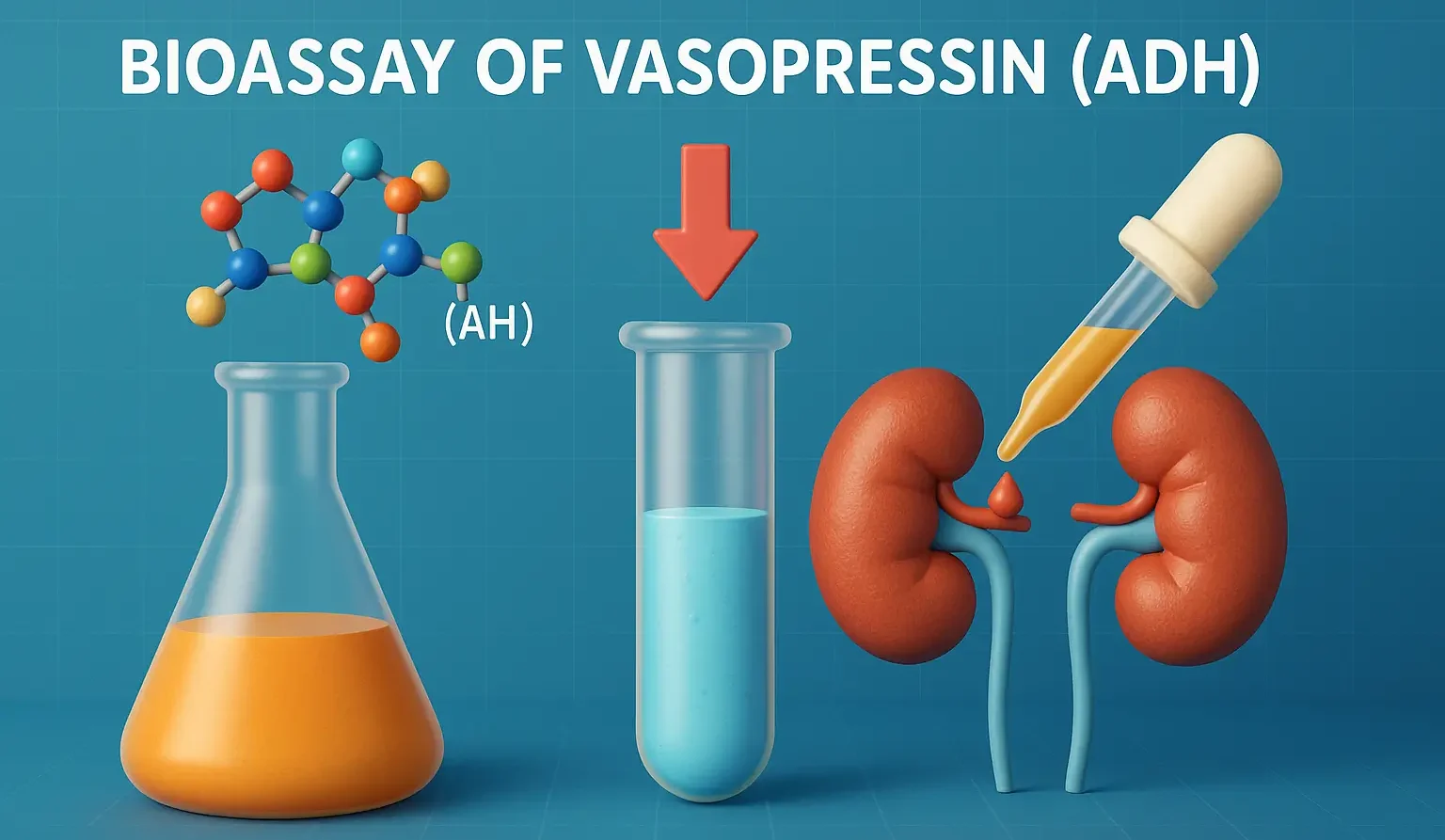- Bioassay of Vasopressin (ADH): Commonly done using rat pressor or antidiuretic assays.
- Bioassay of Vasopressin (ADH): Measures vasoconstriction or urine volume reduction in test animals.
Principle Bioassay of Vasopressin (ADH)
- Vasopressin (antidiuretic hormone, ADH) has two major effects:
- Antidiuretic effect (increases water reabsorption in the kidney).
- Vasopressor effect (vasoconstriction, increases blood pressure).
Methods
1. Antidiuretic (Rat Antidiuretic Assay)
- Procedure:
- Deprive rats of water for a specific time so that they are sensitive to ADH.
- Inject the standard vasopressin and measure urine volume (or urine osmolality) for a given period.
- Repeat with the test preparation.
- Potency Determination: Compare the reduction in urine output (or increase in urine osmolality) for the standard vs. test.
2. Pressor (Blood Pressure) Assay
- Procedure:
- Use an anesthetized rat or dog with an arterial blood pressure cannula.
- Administer standard vasopressin and measure the rise in mean arterial pressure.
- Wash out, then administer the test sample.
- Potency Determination: Compare the dose required to produce a specific increase in blood pressure (e.g., 20 mmHg) for both standard and test.
Advertisements

